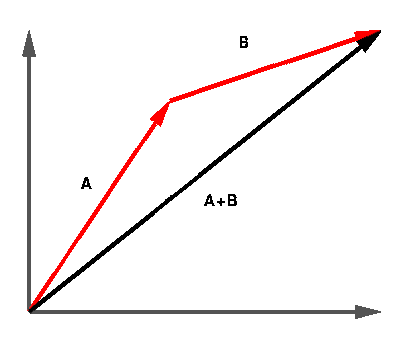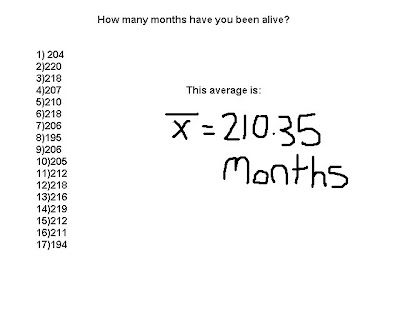Highway 10 Connexus
Grade 12 students in Manitoba learning Applied Math... They're in two different towns, and happen to be connected by Highway 10...They'll be learning with and from each other. Ryan Maksymchuk and Cam Bennet are teachers in Swan River and Dauphin, Manitoba, respectively. This is a bright idea that may encourage other teachers and students to consider collaborating with other learners in other places...It might work. It might not...Watch and see...
Tuesday, June 23, 2009
Sinusoidal Functions Review
The periodic function equation is y=Asin(Bx+C)+D and that is what you will input into the software of your choice.
A=Amplitude
B=Period (formula for period P=2(pi)/B)
C=Phase shift
D=Verticle shift
Here is a site that demonstrates those values (very usefefull to play around with it)-http://www.ronblond.com/M12/sc.APPLET/index.html
If you are given the sinusoidal function(periodic function) and want to graph it using a calculator
1. press[mode] and make sure that it is on radian NOT degrees
2. press [y=] and input the formula Asin(Bx+C)+D (substitue numbers)
3. press [graph] and behold the squiggly lines
-you may want to adjust the windows setting to get a better picture
If the information is given in tabular data then you will have to use something called SinReg
1. press [stat] and put the data into a list
2. press [stat]-> calc then go down to something called SinReg
3. back at the home screen put in SinReg,L1,L2,Y1
4. turn on the stat plot ([2nd y=]) and press graph
And that my friends is periodic functions in a nut shell.
Tuesday, June 2, 2009
Sequences and Series Review
Sequences and Series PPT
(Sept 10/09)
Update: The PPT link actually works out pretty well and if I were to change the Show to be nice with Slideshare I would have to change quite a bit. I'm just going to leave it the way it is.
Monday, June 1, 2009
Some key words and phrases are:
If you know your directions your going to get this...
These are the few different directions that your going to end up getting....
East of North
East of South
South of East
South of West
West of South
West of North
North of West
Always start with the first direction you are given and go clockwise or counter clockwise in the amount of degrease you are given.

As you see the first direction it is done as i said but the second direction is a bit more tricky. When you draw you first line just draw it till the distance you need to go. For example it may say 5km when of coarse you couldn't draw it. Make a scale that makes since to the amount of space you have to draw it. 1km may be one centimeter. When you draw your second line you must imagine or draw a norther grid as the end of line and draw the second line just like the first.
If the question asks you what is the distance, "the way the crow flys" it's as simple as measuring the distance back to the staring point. If you have drawn it to scale and wrote down the right distances just use a ruler for the distance.
Stats unit review, (confidence intervals)
Confidence intervals.
A confidence interval is… “Predicting the likelihood that the mean of a sample occurs within a certain interval, a certain percent of the time”.
90%...95%...99%... sizes of confidence intervals considered “worthwhile” for statistical prediction purpose.
Here is an example question:
A research study on fruit flies found that an average of 50% of them stay alive after 32 hours.
a) Determine the 95% confidence interval for the percentage of a sample of 1000 fruit flies still alive after 32 hours. Show your work.
Here is what you do.
In your calculator, press the buttons… STAT then TESTS. Go to Prop z-int and it brings up this screen.
X:
N:
C-Level:
Calculate
X is your mean, N is your total number, so in this example your X would be 500, and your N would be 1000. Your C-level is 95. Press calculate and you should get this screen.
1-PropZInt
(.046901,.053099)
P=.5
N=1000
Your percentage interval is (.046901,.053099)
After every question you need to explain the meaning of the confidence interval. So in this example you would write….
If a similar experience/survey/poll were conducted this interval (46.9, 53.1) means that we are 95% confident that 32 hours later out of the 1000 fruit flies between 46,9 and 53.1 percent of them will remain alive.
I hope you are confident with this part of the unit, and if you have any questions please place them in the comments section and I will do my best to answer them.
Friday, May 29, 2009
Grouped Data
 You find the average by adding up all your results from the data and divide by how many sets there are. In our example we took the sum of everything and divided by 17 to get 210.35 as an average.
You find the average by adding up all your results from the data and divide by how many sets there are. In our example we took the sum of everything and divided by 17 to get 210.35 as an average.There are many ways of organising data (T-chart, Venn Diagram, Etc)
Here is another way of showing our results:

Here we took the averages, and used tally marks to show how many of the numbers from our data fall into place of the averages. Your tally marks must add up to how many sets of numbers you have. In our Example our tally marks add up to 17.
Wednesday, May 20, 2009
Probability
Ex. Roll a regular 6 sided die; spin a spinner (numbered 1-4).
6x4=24 possible out comes in the sample space.
(1, Green) (1, Red) (1, Orange) (1, Blue)
(2, Green) (2, Red) (2, Orange) (2, Blue)
(3, Green) (3, Red) (3, Orange) (3, Blue)
(4, Green) (4, Red) (4, Orange) (4, Blue)
(5, Green) (5, Red) (5, Orange) (5, Blue)
(6, Green) (6, Red) (6, Orange) (6, Blue)

P(f or 5)=P(f)+P(5)
=16/52
=4/13 or 31%
B: red cards-26/52

the above are venn diagrams of the two examples given earlier.
-------------------------------------------------------------------------------------------------------------------------------------------------------------------------------------------------
INDEPENDENT/DEPENDENT EVENTS
*involves chronology of events(order in time)
Independent events do NOT have an effect on each other (ie. successive coin flips)these events are random.
Dependent events do have an impact on some subsequent probability event (ie. newest thing Depends on an older thing) these are not random.
example of dependent events
ex: "with or without replacement"
socks from a drawer
balls from an urn
Take for example the famous game off of "The Price Is Right" 3-Strikes game.
Fundamental Counting Principle:
When order doesn’t matter you use nCr. You enter the first number (number of letters in the alphabet, number of 5 cards poker hands, etc…), press math, PBR, nCr, the second number (the number of letter code words/the number of diamonds and hearts, etc…).
When order does matter you use nPr. You enter the first number (number of letters in the alphabet, number of 5 cards poker hands, etc…), press math, PBR, nPr, the second number (the number of letter code words/the number of diamonds and hearts, etc…).
A'=(1-A)
A+A'=1
The definition of A is one thing or one sample. The definition of A' is everything else involved except A.
 Starting at the house CO-OP you head home but have to stop at Bob’s house to pick up your homework. You can only head South and East. How many ways can you get home from the CO-OP while stopping at Bob’s house?
Starting at the house CO-OP you head home but have to stop at Bob’s house to pick up your homework. You can only head South and East. How many ways can you get home from the CO-OP while stopping at Bob’s house?Imagine encountering a problem like this…DON’T RUN AWAY IT’S EASY!!
You use Pascal’s Triangle. You first figure out the larger rectangle then the square.
You start off by adding the two ones to get 2. You then add the next one on the side and the two you just got to get three, you continue by adding the two numbers beside each other and putting their sum in the box below UNTIL you reach the red square, this is the stop point. You then start again in the new square and stop at the stop point.
You then add the two numbers that are in the red boxes, which are 126 and 6.
126+6=132
So therefore there are 132 ways to get from CO-OP to Home.

Monday, May 4, 2009
Design and Measurement
Thursday, April 30, 2009
Tuesday, April 28, 2009
using microsoft excel for sequences
Monday, April 27, 2009
sequences are very exciting and fun to do
there are 2 different kinds of sequences
arithmatic sequences are found by adding or subtracting a common number ex: 2,4,6,8
geometric sequences are found by multiplying a common ratio
ex: 2,4,8,16
a recursive formula is based on the preceding term
the formula is tn=tn-1x2
nMin=1st term
u(n)=formula
u(mim)=value of first term
on the calculator




